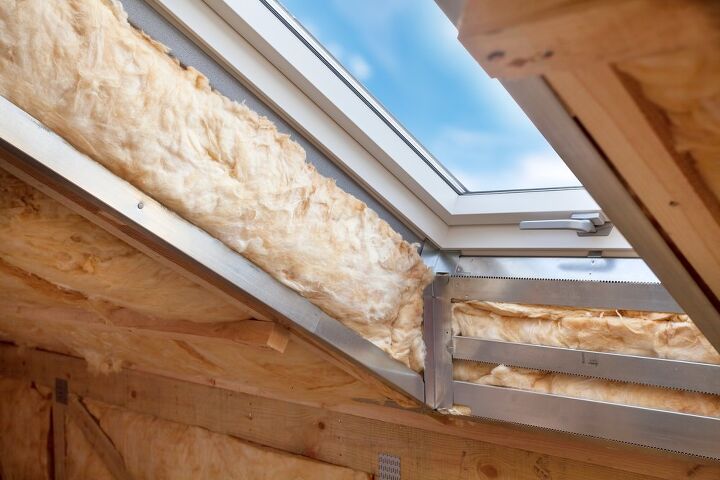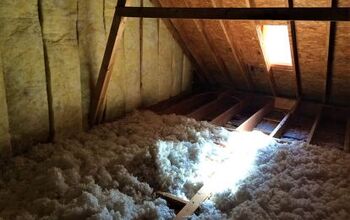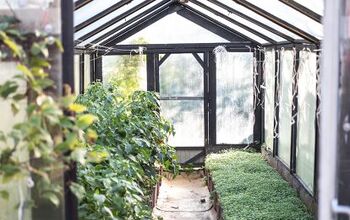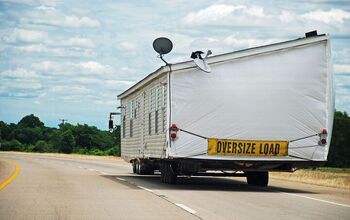How Much Does Insulation Cost?

A home without insulation is like a bear without its fur. Sure, the bear is still a bear, but without fur, it loses all of its thermal integrity. Insulation minimizes the flow of heat and cold air in and out of your home, acting almost like a coat of fur, and it keeps your energy bills low.
It costs an average of $1,750 to install insulation. The average labor cost to install insulation is $55 per hour or $510 for fiberglass batt insulation. It only costs $250 to insulate the average crawlspace, but roof insulation costs at least $1,500 for the average homeowner.
Builders and homeowners need insulation no matter what. However, you also need to make sure you get the most bang for your buck. Let’s take a close look at how much insulation costs and what you need to know to make a decision.
Related Guide: How Much Does It Cost To Insulate A House?
Do You Need Insulation Installers?
Get free, zero-commitment quotes from pro contractors near you.

What Is Insulation?
Insulation is an implement used in homes and buildings to minimize and absorb heat flow. Builder-owners and insulators use insulation to fill gaps for thermal purposes and even fire protection.
You can find insulation in several key places in your home, including:
- Behind the walls
- Attic
- Crawlspace
- Roof
- Basement
Heat can flow in and out of your home through any of the above places. Using proper insulation boosts your energy efficiency and makes the home more comfortable. It is also worth noting that insulation improves the acoustic quality of your home, boosting privacy and simply sounding better.
Blown-In Insulation Cost
Blown-in insulation is quite popular, and costs between $900 and $3,000 for installation and materials. You can’t go wrong with blown-in insulation because of how airtight and effective it is.
Total labor cost depends on the allotted space, how long it takes, and your contractor’s rate. You can spend between $35 and $70 an hour for blown-in insulation installation. Labor can cost as much as $210-$400 or more, and so some homeowners take matters into their own hands.
If you install blown-in insulation on your own, your only cost is materials and renting a blower. Blown-in insulation only costs $0.50-$2.50 per square foot, and you can rent a blower for $25-$70 for 4-6 hours, or $100 for 24 hours.
| Blown-In Insulation Cost Factors | Costs |
| Material | $0.50-$2.50 Per Square Foot |
| Bag Of Blown-In Insulation | $400-$1,000 |
| Labor | $210-$400+ |
| Blower Rental | $25-$100 |
Within blown-in insulation, there are three types: cellulose, wool, and fiberglass. Cellulose is the most expensive option and can cost $2.50 per square foot. However, most builder-owners find it worth it for the heat and fire resistance cellulose insulation has to offer.
Radiant Barrier Insulation Cost
If you live somewhere that experiences vast temperature changes, you may need radiant barrier insulation. Radiant barrier insulation instead soaks up and deflects the heat on the surfaces above it. You can find radiant barrier insulation for $0.25-$0.40 per square foot, and $1,000-$1,500 for installation.
Radiant barriers are similar in concept and function to reflective barriers. Reflective barriers effectively do the same thing as radiant barriers, and they cost the same. Both reflective and radiant barriers prevent heat from transferring into the home.
If you need to insulate a 1,200 square foot space with a radiant barrier, it will cost $300-$480 in materials. Add another $1,000 minimum to that cost for labor and installation.
Spray Foam Insulation Cost
Spray foam insulation is another viable option, and it is also easy to install. There are two types of spray foam insulation: open-cell, and closed-cell. The cheaper option is open cell at $0.30-$0.50 per board foot, and closed-cell costs up to $2.00 per board foot.
The R-value of spray foam insulation is quite high, and it is energy efficient. You could save as much as $40 per month with well-installed spray foam insulation.
Closed-cell insulation is the best choice, but open-cell spray foam is great as well. If you have the extra money in your budget for an extra $0.45-$1.50, choose closed cell insulation for ultimate energy efficiency.
Fiberglass Batt Insulation Cost
For many homeowners, fiberglass batts is what they think of when they hear “insulation”. That is because countless builder-owners choose it for its cost-effectiveness and efficiency. Fiberglass batts wouldn’t be so effective if they weren’t so durable, and they can last up to 100 years.
You can expect to pay between $0.60 and $1.20 per square foot for fiberglass batts. Luckily, fiberglass batts are easy to install and that helps with labor costs. For a 1,200 square foot space, you can expect up to 12 hours of work across 2-3 days.
Labor costs $420-$840 for 1,200 square feet of fiberglass batts, and it is worth it. If you install it yourself, you could keep the cost as lost as $720 total for materials and supplies.
| Type Of Insulation | Cost Per Square Foot | Cost Per 1,200 Square Feet |
| Blown-In | $0.50-$2.50 | $600-$3,000 |
| Radiant/Reflective Barrier | $0.25-$0.40 | $300-$480 |
| Spray Foam | $0.30-$0.50 or $0.75-$2.00 | $360-$2,400 |
| Fiberglass Batt | $0.60-$1.20 | $720-$1,440 |
Insulation Labor Cost
Unlike many expensive home jobs, labor is not as huge of a cost in insulation as you may think. It can sound intimidating to hear that many insulators charge $35-$70 an hour, but it does not take long. With that said, depending on where you live, it may be pricier and cost up to $125 an hour.
Insulation is best installed by professionals, and they can do it quickly. Your insulation installation could take as little as 2 hours, or as long as 12 hours. It all depends on the material, method of insulation, and how big the space is.
| Type Of Insulation | Installation Time | Labor Cost |
| Blown-In | 6 Hours | $210-$400 |
| Radiant/Reflective Barrier | 4-5 Hours | $140-$350 |
| Spray Foam | 2-4 Hours | $70-$280+ |
| Fiberglass Batt | 6-12 Hours | $210-$840 |
If your heart is set on saving money and doing it yourself, you can save big. However, it will likely take you longer to install the insulation if you are inexperienced. Otherwise, it is worth the $70-$840 it can cost for labor costs when you hire an insulator.
Where Does Insulation Go?
Insulation is literally all around in your home, and that is why it is effective. Your attic, walls, roof, ceiling, crawlspace, and basement all need insulation. The use of insulation throughout an entire house is the best way to minimize the flow of heat.
Cost To Insulate Attic
It can cost between $1,500 and $2,200 or more to insulate an attic. There may be a wide range in cost, but that is due to the many cost factors. Your choice of insulation affects the total cost, and so does the size of your attic.
Most professionals turn attic insulation into a 2-day job. With that said, it could take as little as 1 day if your attic is small, say 400 square feet. If you want to supplement your attic insulation with a radiant barrier, add another $350 to the bill.
Cost To Insulate Walls
Wall insulation is a must for absolutely every home, and you don’t want to skimp on it. You can opt to insulate your own walls, and it could save you money. However, hiring a professional is your best bet and only costs $0.75-$1.00 per square foot.
If you need to insulate 1,200 square feet of walls, it will cost you between $900 and $1,200 in materials. You can insulate walls with any of the types of insulation, and they are all effective. However, blown-in, batts, and spray foam insulation is best for insulating walls.
Cost To Insulate Crawlspace
You should never forget about insulating your crawlspace. If you properly insulate your crawlspace and use insulation that can handle moisture, it will save you energy.
More often than not, professional insulators choose to use fiberglass batts for crawlspaces. That is because they are easy to place in tricky spots, and they are cost-effective. Crawlspaces are the cheapest spot in your home to insulate usually, and it costs $250 in most cases.
However, some crawlspaces are bigger than others, and it could cost more or less. It is not a bad idea to consider a reflective or radiant barrier in addition to fiberglass batts for your crawlspace.
Cost To Insulate Roof
It may seem obvious, but it can be easy to forget the importance of insulating a roof. Much like exterior walls, roofs are a direct barrier between your homes interior, and the external temperature. Roof insulation is of the utmost importance if you an attic especially.
Roofs are often insulated when they are being installed, and that makes things simpler. It can cost between $1,000 and $2,000 to insulate a roof depending on the insulation, the laborer, and the size of the roof.
Cost To Insulate Basement
Basements can get quite hot or quite cold if there is no insulation. Because of that, insulating a basement is a no brainer to many builder-owners that know that part of the house is thermally confusing.
Your average basement is between 700 and 1,000 square feet. Materials alone could cost as little as $175-$1,750, or as much as $250-$2,500. Spray foam is your best bet for insulating a basement, and it would only take up to 4 hours.
For your total cost, add the $135-$280 minimum for labor, but labor could cost as much as $600.
When Should I Replace My Attic Insulation?
While insulation can supposedly last up to 100 years, attic insulation is often only good for 15 years. It could last longer than that, but it usually shows signs of wear and tear around that time. If you keep track of how your insulation looks through the years, it will be easy to tell when it is time.
There are a few things to keep an eye out for that can tell you it’s time to replace the insulation, including:
- Mold or water damage
- Peeling and flaking insulation
- Gaps or cracks in insulation
- Cold or warm air fills the attic (insulation not doing its job)
If notice any of the above factors, call an insulator and get a quote. Sometimes, water can soak through insulation and get trapped in the wall or floor beneath it. This causes mold, water damage, and even a foul odor.
Any gaps or cracks in the insulation is a sure sign that it needs to be replaced. Even if you can’t personally see the cracks, you can feel them if cool or warm air from outside fills the attic.
Does Insulation Get Moldy?
Yes, insulation, can get moldy, but not every type of insulation does. Fiberglass insulation, for example, is a material that is not conducive to mold growth, so it is mostly immune. However, mold can technically grow behind or beneath fiberglass insulation if moisture seeps through and becomes trapped.
Many homeowners choose fiberglass insulation specifically for the mold resistance factor. However, cellulose or wool-based insulation are susceptible to mold because of how they react to moisture. Both of those materials can get and stay wet and are often in dark places which is a perfect combination for mold.
It can cost up to $2 per square foot to remove moldy insulation. If that mold spreads throughout the insulation, it can get pricey fast. Your best bet is to simply choose fiberglass insulation, or simply keep an eye out for excess moisture or mold.
Is It Cheaper To Insulate Myself?
Yes, opting to insulate your home on your own can save you hundreds, or even thousands, of dollars. For example, if you hire out to insulate a 1,200 square foot space with fiberglass batts, it could cost as much as $2,280.
However, if you chose to insulate on your own, you could shave an average of $525 off of that cost. Depending on your material costs and the size of your space, you could save up to $1,000, or even more.
Your only costs for installing insulation yourself are the materials and supplies. If you install blown-in insulation, there is an extra cost for blower rental, but it won’t be more than $100. You can also purchase DIY friendly blowers starting at $375, but high-end options start at $700.
Related Questions
Is radiant barrier better than insulation?
As far as preventing heat transfer, yes, radiant barrier is better than standard insulation. You can actually pair a radiant barrier with another form of insulation, and it is a great idea. It can save you money on energy as your home will be more insulated and protected.
How long does insulation last?
Insulation can last up to 100 years, but it often goes bad roughly 20 years before that. There are other factors, however, such as pest damage, water damage, or even fire damage that could shorten its life. Spray foam insulation is actually the longest lasting option, and many builders choose it for the 100-year lifespan.
Does insulation help with sound?
Yes, insulation helps with sound both inside and outside your home. If there is loud noise outside and your home is well insulated, you’ll hardly hear it. Insulation also helps minimize sound bleeding through walls going room to room within your home’s interior.
Does insulation save money?
Yes, insulation saves money and knocks between 15% and 30% off of energy bills on average. Many homeowners are able to save $200-$500 a year, and it also helps you leave less of a carbon footprint. If you live in a climate with seasonal changes, adding a radiant barrier to your insulation helps you save even more money.
Do You Need Insulation Installers?
Get free, zero-commitment quotes from pro contractors near you.

Summing It Up
Insulation costs roughly $1,500-$3,000. The vast majority of the cost of insulation comes from the materials, and the rest comes from the 4-6 hour installation. Factor a $35-$70, or even $150 hourly rate from your insulator to your total cost.
You can save big with proper insulation, and there is no such thing as too much. If you want to be extra careful, add a radiant or reflective barrier to your existing insulation. Call around to your local insulators and see which service can get you the best value for professional insulation installation.

Nick Durante is a professional writer with a primary focus on home improvement. When he is not writing about home improvement or taking on projects around the house, he likes to read and create art. He is always looking towards the newest trends in home improvement.
More by Nick Durante



























